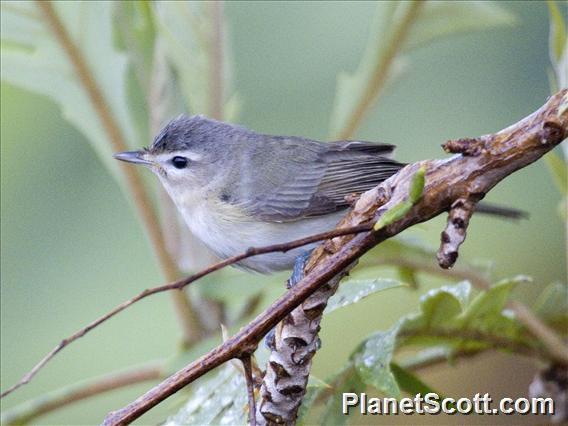Warbling Vireo (Vireo gilvus)

Warbling-Vireo (Vireo gilvus)
×


Warbling-Vireo (Vireo gilvus)
About Warbling Vireo (Vireo gilvus)
- Kingdom: Animals
- Phylum: Chordates
- Class: Birds
- Order: Perching Birds
- Family: Vireos
Not Available
Visits
-
2007-05-07Glen Canyon Park, United States of America
-
2008-01-06Singayta, Mexico
-
2010-02-17Tacambaro, Mexico
-
2010-02-20Temescaltepec, Mexico
-
2010-05-08San Pedro Valley County Park, United States of America
-
2012-09-19Golden Gate Park - North Lake, United States of America
-
2014-06-14Peaarson-Arastradero Preserve, United States of America
-
2015-05-03Glen Canyon Park, United States of America
-
2015-05-24Burnidge Forest Preserve, United States of America
-
2015-05-25Montrose Point, United States of America
-
2015-05-26Ferson Creek Fen, United States of America
-
2018-03-17Lake Merced , United States of America
-
2018-07-29Big Bend Yuba River, United States of America
-
2018-08-26Golden Gate Park - San Francisco Botanical Garden, United States of America
-
2018-09-02Lake Merced , United States of America
-
2018-09-16Golden Gate Park - Stow Lake, United States of America
-
2018-09-20Oceano, United States of America
-
2018-09-24Oceano, United States of America
-
2019-05-17Yosemite National Park, United States of America
-
2019-05-18Yosemite National Park, United States of America
-
2020-02-01San Sebastian del Oeste, Mexico
-
2020-10-10Lake Merced , United States of America
-
2021-05-23Montrose Point, United States of America
-
2021-05-24Montrose Point, United States of America
-
2021-05-26Montrose Point, United States of America
-
2021-05-29Montrose Point, United States of America
-
2021-06-10Bishop, United States of America
-
2021-06-12Glass Mountains, United States of America
-
2021-09-06Presidio - Fort Scott, United States of America
-
2021-09-07Presidio - Fort Scott, United States of America
-
2021-09-11Presidio - Fort Scott, United States of America
-
2021-10-02Presidio - Fort Scott, United States of America
-
2023-05-11Montrose Point, United States of America
-
2023-05-12Montrose Point, United States of America
-
2023-05-12Illinois Beach State Park, United States of America
-
2023-05-13Illinois Beach State Park, United States of America
-
2023-05-15Burnidge Forest Preserve, United States of America
-
2024-03-29San Jose del Pacifico, Mexico
-
2024-04-01La Pasionaria, Mexico
-
2024-04-01San Jose del Pacifico, Mexico
-
2025-05-29Banff National Park - Cave and Basin Marsh, Canada




